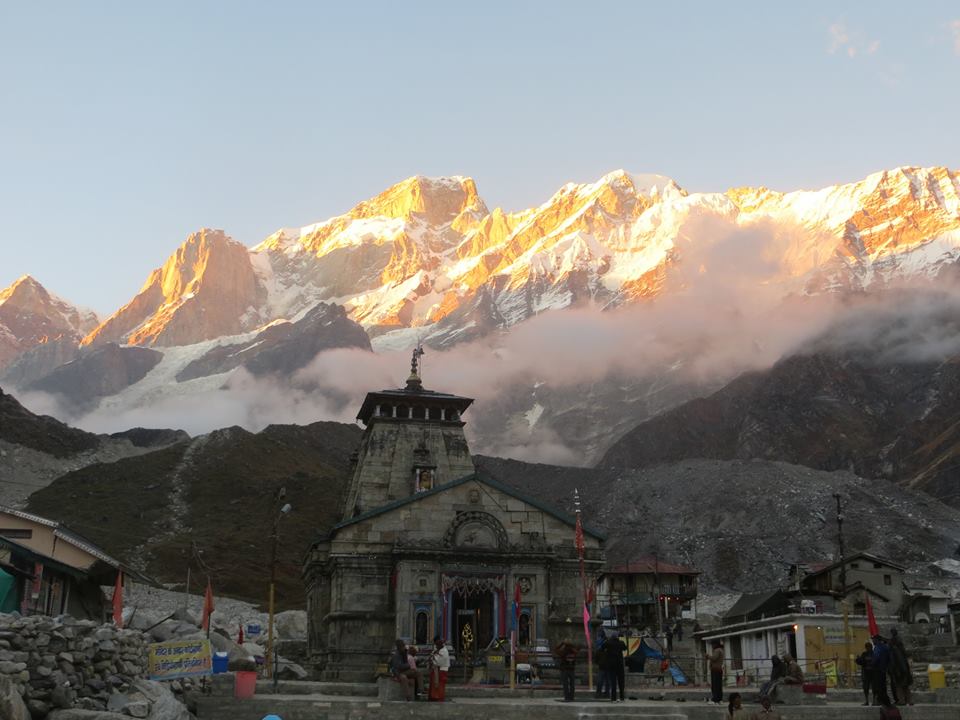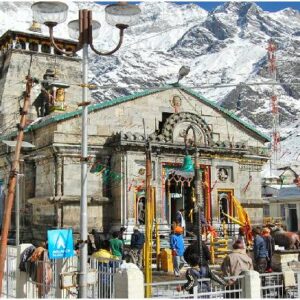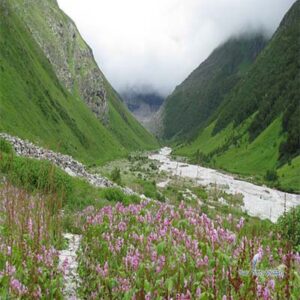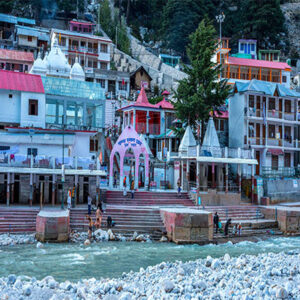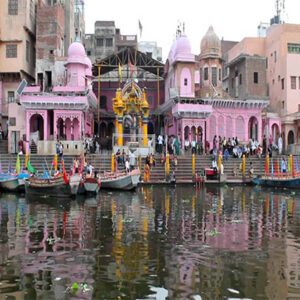Description
Begin on a life-changing spiritual journey with our Chardham Yatra Package from Delhi , designed for devotees seeking divine blessings in the majestic Himalayas. This spiritual expedition covers all four sacred shrines of Uttarakhand—Yamunotri, Gangotri, Kedarnath, and Badrinath—each holding immense religious and historical significance. Nestled amidst snow-covered peaks, tranquil rivers, and mystical forests, this yatra offers not just spiritual fulfillment but also breathtaking Himalayan beauty.
With our Chardham Yatra Packages from Delhi, pilgrims enjoy a perfectly organized journey that includes smooth transportation, comfortable accommodations, guided darshan, and hygienic meals—allowing you to focus solely on devotion, peace, and prayer.
Why Choose Our Chardham Yatra Packages from Delhi?
We ensure a safe, comfortable, and spiritually enriching yatra for every pilgrim:
✔ Comfortable Travel: Well-maintained vehicles for a seamless journey from Delhi
✔ Clean Accommodations: Stay in verified hotels and guesthouses
✔ Pure Vegetarian Meals: Healthy and sattvic food throughout the trip
✔ Helicopter Options Available: Convenient travel to Kedarnath and Badrinath
✔ Professional Support: Assistance from experienced tour managers and local guides
Whether you are traveling with family, senior citizens, or in groups, we provide personalized arrangements for every devotee.
Types of Uttarakhand Chardham Yatra Packages from Delhi
Choose a package that suits your budget and travel preferences:
| Package Type | Highlights |
| Standard Package | Budget-friendly, neat stays, and shared transportation |
| Deluxe Package | Better accommodation and comfortable private vehicles |
| Luxury Package | 4-star stays, exclusive transport & helicopter options |
| Helicopter Package | Fastest way to complete Kedarnath & Badrinath darshan – ideal for senior citizens |
Best Time to Plan Chardham Yatra from Delhi 2026
The yatra opens every year around April–May and continues till October–November.
Best months: May, June, and September – pleasant weather & clear routes.
Luxury Chardham Yatra by Helicopter from Delhi
For those seeking a swift and premium experience, our Chardham Yatra by helicopter from Delhi is the perfect choice. Enjoy scenic aerial views, VIP darshan, and luxurious accommodations for a memorable pilgrimage. Save time while immersing you in the divine aura of the Himalayan shrines.
Book Your Chardham Yatra from Delhi Today
Experience devotion, comfort, and mesmerizing Himalayan landscapes in one unforgettable pilgrimage.
Our well-managed Chardham Yatra Packages from Delhi ensure spiritual fulfillment without travel stress.
Contact us now and reserve your seat for the divine journey!
Itinerary
Day 01: Delhi – Haridwar
Day 02: Haridwar – Barkot
Barkot Weather– Generally agreeable in summer, the temperature ranges from 25-30 degrees Celsius, Winter: The Days are pleasantly cool but the nights are cold, temp ranges from 10 deg to 05 deg.
Day 03: Barkot – Yamunotri – Barkot
Yamunotri Temple: Maharani Gularia of Jaipur constructed the temple in the 19th Century. It was destroyed twice in the present century and rebuilt again. At Yamunotri, One can cook rice by packing it in a cloth and dipping it in the hot water of the Tapt Kund. Pilgrims take this cooked rice home as “Prasad”. Here near the temple “Pooja” can be offered to Divya Shila.
Surya Kund: There are a Number of thermal springs near the temple, which flows into numerous pools. The most significant of these is Surya Kund.
Yamunotri Weather – In summer the maximum temp is 18 degrees and the minimum is 10 degrees Celsius. The days are pleasantly cool but the nights are cold.
Day 04:Barkot – Uttarkashi
Uttarkashi is home to a number of ashrams, temples. The name of the town reflects its similarity to and location (as north of) the city of Kashi (Varanasi). Similar to Varanasi, the town of Uttarkashi is also situated on the banks of River Ganga.Vishwanath temple – Vishwanath temple is one of the oldest Shiva temples in Northern India. Rebuilt in 1857 by Maharani Khaneti Devi of Tehri State in the ancient architectural style. It is situated at the heart of the town. A heavy iron trident, symbolic of divine mothers, is erected and worshiped from time immemorial at the temple complex. Ganeshji, Sakshi Gopal, Markandeya Rishi’s small shrines are also part of the temple complex. Akhand Jyoti as well as Akhand Abhishek, special aarti in the morning and evening are offered. As per Skanda Puran, Uttarkashi is known as ‘Saumya Varanasi’, the abode of Lord Shiva in Kaliyug, and is counted as one of the twelve Jyotirlingas.Shakti temple – Right in front of the Vishwanath temple is Shakti temple. It has a big ‘Trishul (Trident)’ of about 6 meters in height and a circumference of 90 cms. at bottom. Though there are different views about the making of this, the upper part of it seems to be made up of iron and the lower one is of copper. As per the epics, this Shakti was thrown on the devils by the Goddess Durga (Shakti), hence it gets its name. Since then this Shakti has been erected over here.Uttarkashi Weather – Generally hot in summer, the temperature ranges from 30-35 degrees Celsius but nights are pleasant, cold in winters.
Day 05:Uttarkashi – Gangotri – Uttarkashi
Gangotri Temple: The temple was built by the Gorkha General Amar Singh Thapa in the 18th Century, and is situated on the right bank of Bhagirathi.
Gangotri Weather – The maximum temperature during summer can go up to 20° Celsius. Summer nights can get cooler with a minimum temperature of 10° Celsius. Light woolen clothes are required while visiting Gangotri during summer. The Winter season is very chilly in Gangotri. Gangotri will be covered in sheets of snow during winter. Pilgrim centers remain closed throughout winter due to massive snowfalls.
Day 06: Uttarkashi – Guptkashi
Guptakashi:- The name Gupt Kashi means “Hidden Benares. Mythology describes how when the Pandava brothers were searching for a glimpse of Shiva, Shivji first concealed himself at Guptkashi, but later fled from them further up the valley to Kedarnath, where the Pandavas finally got their wish fulfilled. There are more tangible relations as well-the Kedarnath pandas (priests) live in Guptkashi during the winter months, and after the Kedarnath temple closes for the winter, the image of Kedarnath passes through Gupt Kashi on its way to Ukhimath (across the valley), where it stays for the winter.
Guptkashi Weather – Agreeable in summer, the temperature ranges from 25-30 degrees Celsius. Cold in winters.
Day 07: Guptkashi – Kedarnath
By Helicopter: Morning our driver will drop you your pre-book Helipad. You can inform the driver about your arrival time whether it will be by helicopter or by trek, so that Driver will be there to pick you up. (Note: helicopter ticket is not included in this package).
By Trek: Morning our driver will transfer you to Sonprayag then you have to take a local jeep for Gaurikund & then your trek starts for Kedarnath Ji. After darshan, you follow the same & return to Sonpraag. There is a big parking issue so the driver will go back to another palace if his contact no. is not working then you have to arrange another taxi or wait for your driver.Kedarnath: The Kedarnath shrine, one of the 12 jyotirlingas of Lord Shiva, is a scenic spot situated, against the backdrop of the majestic Kedarnath range. Kedar is another name of Lord Shiva. According to legend, the Pandavas after having won over the Kaurava in the Kurukshetra war, feel guilty of having killed their own brothers and sought the blessings of Lord Shiva for ransom. He eluded them repeatedly and while fleeing took refuge at Kedarnath in the form of a bull. On being followed he dived into the ground, leaving his hump on the surface.Kedarnath Weather: – Due to its high elevation, the weather in Kedarnath remains cold for the most part of the year. Summer here is cool and agreeable while winter is severe. During the summer season, the temperature varies around 20°Celsius. Light woolen wear is recommended. The Winter season in Kedarnath is severe with the mercury falling to as low as 0°Celsius. During this time the place experiences snowfall as well. Due to the extreme chilly climatic conditions, this time is usually avoided by tourists.
Day 08: Kedarnath – Guptkashi
Day 09: Guptkashi – Badrinath
The morning after breakfast, move to Badrinath. Check in to the hotel arrival in Badrinath. Pilgrims after having a bath in the Tapt Kund have the Darshan of Badrivishal & Aarti in the evening. Brahma Kapal is important for Pind dan Shraddh of ancestors (Pitrus). There are other interesting sightseeing spots like Mana, Vyas Gufa, Maata Moorti, Charanpaduka, Bhimkund, and the “Mukh” of the Saraswati River. Just within the three km of Badrinath Ji. Stay overnight at Badrinath.
Mana Village: Inhabited by an Indo-Mongolian tribe, it is the last Indian village before Tibet.
Vasundhara: As the name suggests, Vasundhara is a magnificent and beautiful waterfall. This place is 5 km. from Badrinath out of which 2 km. is motor-able up to Mana.
Bhim Pul: On the other side of Mana village, a heavy rock forming a natural bridge, lies over the roaring Saraswati river. It presents a spectacular view of water thundering down through the narrow passage under the rock and is believed to have been placed there by Bhim, the second eldest among the five Pandava brothers.
Vyas Gufa (cave): Near Mana Village, this is a rock cave where Ved Vyas is believed to have appeared in the Mahabharata and the Pauranic commentaries.
Badrinath Weather: The maximum temperature will be around 18° Celsius and the average minimum is 8° Celsius. Warm and woolen clothes are hence required for a stay in Badrinath throughout the year. Winter in Badrinath is often accompanied by snowfalls. Winter is very chilly with an average temperature of 5° Celsius. Due to the extreme chilly climatic conditions of weather, this time is usually closed for tourists.
Day 10: Badrinath – Joshimath – Srinagar
The Morning after breakfast moved to Srinagar.
Srinagar Weather – Generally hot in summer, the temperature ranges from 35-40 degrees Celsius, Winter: The Days are pleasantly cool but the nights are cold, temp average from 20 deg to 05 deg.
Day 11: Srinagar – Haridwar
After breakfast, I moved to Haridwar via Rishikesh. Rishikesh ‘place of sages’ is a celebrated spiritual town on the bank of Ganga and is surrounded by the Shivalik range of the Himalayas on three sides. It is said that when Raibhya Rishi did hard penances, God appeared by the name of ” Hrishikesh ” and this area henceforth came to be known as Rishikesh. Check-in Hotel. Later visit Rishikesh Temples & Sightseeing – Laxman Jhulla, Ram Jhulla. Stay overnight at Haridwar.
Day 12: Haridwar – Delhi
After morning breakfast, move to Delhi. Dropping at Delhi Airport/Railway station.
TOUR COST INCLUDES
- 11 Nights accommodation in above mentioned or similar hotels
- All meals at Chardham Yatra 2026
- cab for sightseeing and excursions as per our itinerary
- Driver allowance, Toll tax and parking
TOUR COST EXCLUDES
-
- Air fare / train fare
- Camera charges.
- Coolie / porter charges.
- Donations at temples.
- Extended stay or traveling due to any reason.
- Guide & Entrance fees during sightseeing.
- Any meals other then those specified in Tour Cost Includes’
- Any other item not specified in ‘Tour cost includes’
- 5% Government service tax
TERMS & CONDITIONS
- As per the Government directive, foreigners are requested to produce their passport as photo identity proof and Indians can produce any govt. approved photo identity such as Driving License/Pan Card/Voter ID card/Passport at the point of check-in at the hotel.
- All Prices are in Indian Rupees and valid for Indian National only.
- Above mentioned rates are subject to change without prior notice.
- Rooms are subject to availability at the time of receiving firm booking.
- In case of non-availability of the mentioned hotels, similar kind/quality of hotels will be provided, which can change the above package cost.
- 100 % advance shall have to be paid before departure out of which 50% has to be paid at the time of booking tour.
- Package rates are not applicable in festival period like Diwali & X-mas
CANCELLATION POLICY
- 31 days & prior to arrival – 10% of the tour/service cost.
- 30 days to 21 days prior to arrival – 15% of the tour/service cost.
- 20 days to 11 days prior to arrival – 25% of the tour/service cost.
- 10 days to 06 days prior to arrival – 50% of the tour/service cost.
- 05 days & less, prior to arrival or no show – NO REFUND
- Festivals Like Diwali, X-mas and Long weekend – No Refund on cancellation


